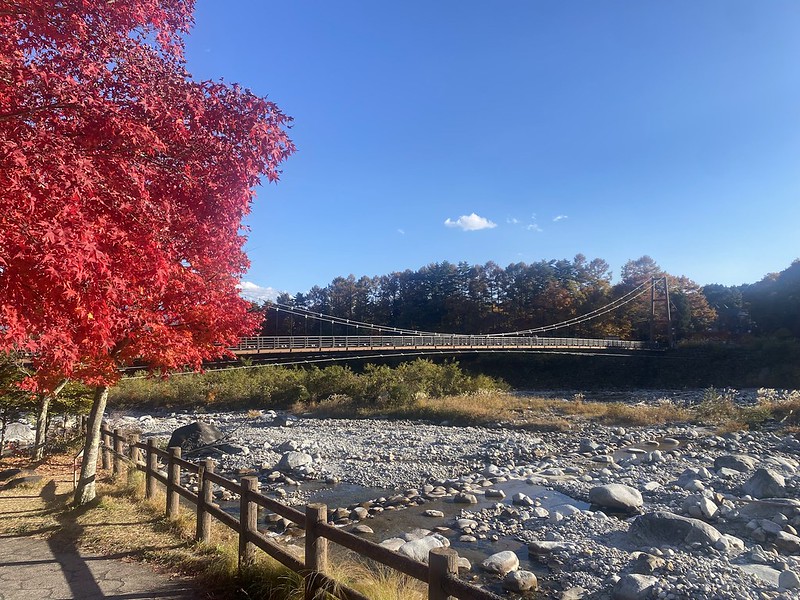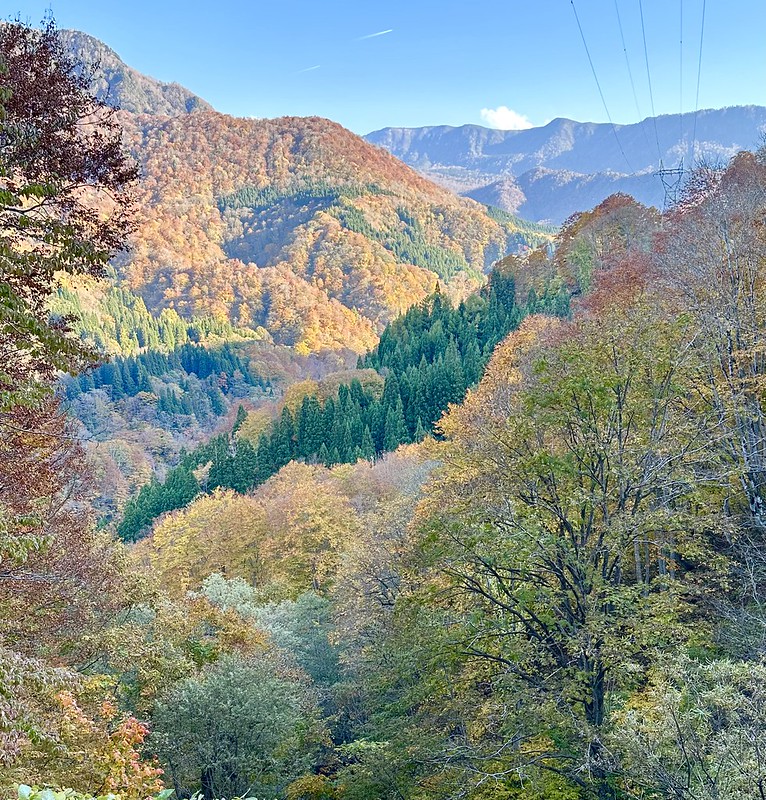Head to Nagano’s Southern and Northern Edges for Stunning Autumn Colors
Nagano Prefecture abounds in destinations famous for fall colors, such as the alpine gems of Kamikochi and Senjojiki Cirque, and picturesque lakes like Togakushi’s Kagami-ike (Mirror Pond) and Karuizawa’s Kumoba Pond (aka “Swan Lake”).
Update:2024/01/24

Nagano Prefecture abounds in destinations famous for fall colors, such as the alpine gems of Kamikochi and Senjojiki Cirque, and picturesque lakes like Togakushi’s Kagami-ike (Mirror Pond) and Karuizawa’s Kumoba Pond (aka “Swan Lake”). But on Nagano’s less-visited southern and northernmost edges you can find unforgettable autumn foliage without the crowds. Here we introduce four suggestions, two in Nagano’s far south and two in the remote north, that take considerable effort to visit but will reward you with the most vivid colors.
Scenic Suspension Bridge and a Lake Surrounded by Momiji (Japanese Maples)
Located in the Ina Valley on Nagano Prefecture’s southern end is the pleasant city of Komagane which is nestled between the Central and Southern Japanese Alps. In early October crowds of people flock here to take the Komagatake Ropeway up to the Senjojiki Cirque for high alpine autumn colors. But by early November, the “Momiji Line” (as it is known in Japan) has come down to lower Komagane City and in particular the area around the picturesque Komakusa Suspension Bridge.



Access
The Komakusa Bridge is 2 kilometers from Komagane Interchange (5 minutes by car or for people transferring from Expressway Bus approximately 5 minutes by local bus), or 10 minutes by bus from Komagane Station for those arriving by JR Iida Line).
Recommended Food to Try
Komagane is famous for “Sauce Katsudon”, fried pork filets in a sweet sauce. Meiji-tei is especially well-known and has multiple locations in Komagane as well as throughout the prefecture.


See also here.
Further up the Ina Valley is the quaint town of Minowa, home to Momiji Lake. Located on the outskirts of the town, the lake is surrounded by 10,000 “Momiji” (Japanese maple) trees, hence its name. In late October and early November, the hillsides around the lake turn brilliant shades of red, yellow and orange, contrasting beautifully with the emerald green water.

The lake was created when Minowa Dam was built and the former residents of the area planted the maple trees as a gift to future generations. The trees have matured and now every fall create a masterpiece of autumn colors. Access to the lake is via a single road that tends to get crowded when the leaves change color.

Access
By car, 20 minutes from Ihoku Interchange on the Chuo Expressway. At the fall foliage peak, the town provides a shuttle bus from a parking lot as private cars are restricted. By public transport, 20 minutes by taxi from Ina Matsushima Station on the JR Iida Line.
See also this suggested itinerary page.
Hidden Akiyama-go and the Healing Beech Forest of Nabekura
Far on the north edge of Nagano Prefecture are two distinct locations for enjoying fall colors.


Akiyama-go (literally meaning “Autumn Mountain Village”) is a remote valley cut off from most of civilization. In late October, the region’s trees become a brilliant harmony of hues drawing busloads of visitors to this otherwise hidden escape. The winding road leads up the valley to Kiriake Onsen, a natural hot spring that bubbles up in a riverbed where you arrange the rocks to make your own bath. Quaint hamlets, stunning river and mountain vistas and one of Japan’s wildest onsens await, all filtered through a patina of reds and golds in autumn.






Kiriake Onsen – soak in a bath you make yourself from river rocks with the hot spring mineral water bubbling up from the riverbed. See here for the details.

Access
By public transport: it is possible to take an on-demand taxi (reservation required) from Morimiya-Nohara Station on the JR Iiyama Line but frequency is limited hence renting a car is recommended. By car: From central Sakae Village, Kiriake Onsen is 40 kilometers (approximately 1 hour) via Routes 117 and 405.
External Link
・Yusenkaku Ryokan (Kiriake Onsen)
After returning to central Sakae Village and heading up the Chikuma River back towards civilization (i.e. Nagano City), you will first come to Iiyama City. High above the left bank of the river is the Nabekura Highlands, home to a beech forest famous for forest bathing. From the Mori-no-Ie Lodge trails lead to several groves of beech trees that exude a healing ambience. In the fall, the forest becomes even more magical as the leaves turn color.




Access
By train: Mori-no-Ie Lodge is 15 minutes by taxi from Togari Nozawa Onsen Station on the JR Iiyama Line
By car: From Toyota-Iiyama Interchange on the Joshin-etsu Expressway, 40 minutes via Route 117.
External Link
Conclusion
While Komagane’s Komakusa Bridge, Momiji Lake, Akiyama-go Valley and the beech forest in Nabekura are not as popular for viewing fall leaves as Nagano’s major sites, they make for scintillating memories free from hordes of tourists, and well worth the trek to the southern and northern ends of the prefecture.




